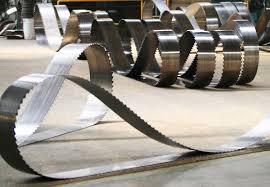Tech Tips
CDN is Key to the Success of Your OTT Platform
CDN is a Content Delivery Network that delivers media content from servers to end-users. It allows the quick transfer of different files of various sizes via an Internet connection. For OTT, CDN is quite popular. It is particularly useful for video streaming services because it helps enhance user experience and boost the performance of your service.
Along with content delivery, CDN performs multiple functions. For example, it decreases the time necessary for transferring content from a server to a user. The expected result is eliminated latencies.
But let’s talk about it in detail.
What are the Benefits of Using CDN?
#1 CDN delivers content worldwide and brings revenue
CDN network solutions distribute your content globally because the video is delivered not form the origin server but from the closest to a viewer.
It is an effective opportunity for your video streaming service growth. Your revenue usually depends on the number of users your platform has. The more viewers pay for a subscription to watch your videos, the more money you generate.
When you expand to new territories, you reach new people, which means more purchases of your service.
#2 CDN reduces latencies
CDNs compress mirror versions of your content, which then is stored in distributed data centers. When a viewer requests a video to play, it is transmitted based on the viewer’s geographic location. As a result, latencies are reduced.
You have more satisfied customers because they get a smooth viewing experience with your service.
#3 CDN provides a good user experience
One of the greatest benefits of a CDN to the OTT industry is reducing latencies and boosting content delivery. Users don’t need to wait for a long time for videos to load, regardless of their location.
CDNs transmit video content steadily despite traffic loads on servers. When too many people request access to the video streaming service, CDNs simply distribute the load across more servers. Moreover, viewers won’t experience delays even when one server is down.
#4 Security
When running your online video streaming business, you may experience DDoS attacks. Your competitors or cybercriminals might want your service to fail to operate. Usually, the goal is to jeopardize your reputation and deprive you of revenue and customers.
CDNs can play a crucial role in preventing DDoS attacks. They can drop the requests from particular clients and IP addresses or distribute requests across multiple servers, reducing the load from the origin server.
#5 Scalability
When you arrange an online meeting for multiple viewers to go live, there will likely be sudden spikes in viewership. You can upgrade your machines or use plenty of them to distribute the load, but it can be expensive.
However, you don’t always have such peaks, which means you don’t need such advanced infrastructure every time.
CDNs allow you to scale up when you need more resources, and when the peak time is over, it will scale back to save you from unnecessary costs.
Final Thoughts
Content delivery networks are a vital part of a video streaming service. It is essential for a user to watch movies and shows without interruptions and long loading times. CDNs deliver videos from a server closest to the viewer, ensuring a seamless user experience. As a result, you have more satisfied customers who are more likely to become regular.
Furthermore, CDNs help you reach people around the world and increase the revenue you generate. Also, it is useful for the mitigation of DDoS attacks.
Related Posts












